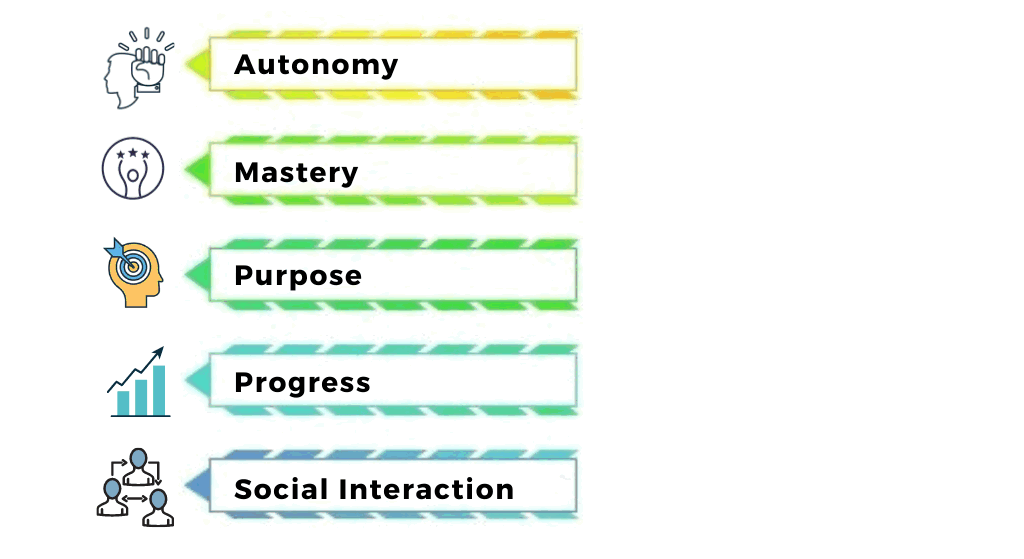Gamify your product or service to drive user engagement
Many ideas fail in the marketplace, even if they come from leading innovators such as Google or Amazon. Consider using the market insight to ideate for everything around customer experience – packaging, delivery, pricing, support, and now gamification.
Early Market Engagement
Early market engagement is a strategic exchange of information with the market. You’ve built the minimum viable product (MVP) and ready to test with some early adopters or beta users. It is imperative to keep in mind that the product at this stage is just a bunch of ideas, assumptions and some data. It is pretty much all invention and creativity. Taking it to the market to create value for consumers and to generate revenue will potentially make it an innovation. You need to work through various aspects for it to be sticky in the marketplace.
Consumers care how they receive products and services. The product delivery model includes, packing, shipping, handling, setup, training, etc. and all that happens between the product leaving the manufacturer/retailer and buyer using it. Service delivery is a lot about transactional experience, communication, ambiance, and handling of an unhappy customer.
Consumers have varied perception of value received. Business model is about setting the price, payment terms and billing, sell vs lease vs subscription, financing options, warranties, returns, trial period, bundling, and now mobile engagement…
Market positioning is making the customer think about your product through advertisements and social media. Naming and tag lines are probably the difficult ones but have significant impact.
Market testing is when the manufacturer/developer wants to get an early indication of how the product or service will be received and accepted by the end-user. It might include focus groups, beta tester, pilot programs, and even up to the first few customers providing feedback.
As an innovator, we must also think of how to support the product in service and at the end of its useful life. What are the possible business models, in terms of ability to service, recycle, salvage? …
Product Packaging to improve Consumer Engagement
Packaging is no longer just a box. Almost every consumer product invests heavily in innovation in packaging. There are so many examples of packaging innovation to capture market share. Toothpaste companies reduced vanity shelf space by making broad caps and going stand up mode. Pomegranate and lemon juice are packaged in bottles that look just like the fruit by shape and color to make it easily recognizable and to give the feel of the real thing. Plastic water bottles are shaped to reduce plastic materials and handling. Ketchup caps and nozzles were designed so that they do not drip.
The box for Amazon Kindle oasis and Google Pixel Buds double up as chargers. Cardboard box for a 12-can-pack went from 4×3 to a 6×2 for ease of stacking in the refrigerator, and then a designer cut to create a dispenser. Many small electronic products use packaging to act as transportation, handling, shelf display, marketing, … purposes as well.
Service Delivery to enhance Customer Experience
The service industry is highly competitive as well. Coffee shops, aircraft interior, sports bars, amusement parks, holiday resorts, etc. go all out to make the experience memorable for you. They are all very innovative about creating customer experience through novelty, thrill, comfort, ambiance, security, safety, sanitization, etc. which are all of value to consumers.
Gamification to build Consumer and Employee Engagement
Think about how to turn your service or product into a game-like experience. It is easier said than done. In product design and development, we can focus on user needs and goals to deliver meaningful experiences people value. Every goal has a motivation, and the key is to develop ways to help motivate people to reach their goals. What better way to motivate people than in a way that is engaging, rewarding, grounded in behavioral science, and even a little bit of fun for them to learn, explore, and use? All the while continuously giving them reasons to engage with your product.
The five principles of gamification are …

- Autonomy: Urge to direct our own lives (I want to control).
- Mastery: Desire to get better (I want to improve).
- Purpose: Yearning to be a part of something larger than ourselves (I want to make a difference).
- Progress: Desire to see results associated with mastery and purpose (I want to achieve).
- Social Interaction: Need to belong, be connected to, recognized by, and interact with others (I want to engage others).
Take eBay as a prime example. Buyers and sellers rate each other. The more they buy, sell, and accumulate good ratings on the platform, the higher they rank in the community. Their ranking is represented with status flair, i.e. Power Seller, Trusted Seller etc., on their profiles and listings to build marketplace prominence and garner buyer and seller confidence.
For more learning, read Innovation Value Chain
